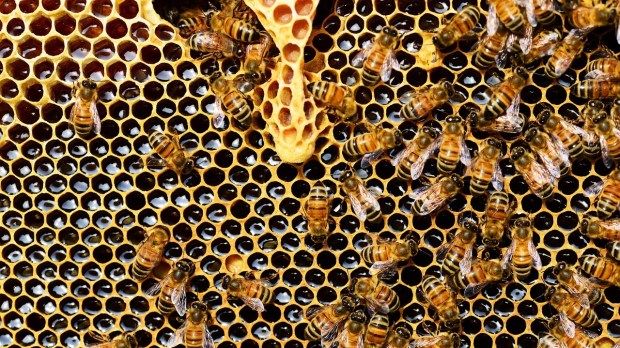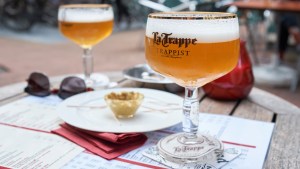This past year, our family became apiarists. We got hold of a few colonies of honeybees and set them up in two hives side by side in front of a field of clover.
The bees have the run of 20 acres of a little wild and wooded valley tucked a few miles north of the Missouri River. They’re free to roam where they will, gathering nectar from wild clover, grape vines, and dogwood.
We’re not particularly talented beekeepers. One of the colonies seems far more motivated than the other – each takes its personality from their queen – and we don’t quite know how to fix it, but so far they’ve survived and even rewarded us with some of their extra honey.
Bees play a vital, if unseen, role in making the world beautiful. They have a complicated relationship with flowers, which tempt them in with bright, colored displays and sweet nectar only to secretly send them along with pollen stuck to their legs. I don’t think the bees are complaining, though.
Neither should we. After all, bees are the hidden laborers who, by spreading that pollen around, fertilize the flowers and make plants capable of producing fruit. Without bees, we wouldn’t know what an apple tastes like. Fruit would barely exist at all.
For example, the Central Valley in California, an area the size of Delaware, produces 2.3 billion pound of almonds every year, but those enormous orchards wouldn’t manage to produce even a fraction of those almonds without the help of bees. Beekeepers actually drive their colonies in on flatbed trucks for the week to help out.
Today it’s a widespread hobby and something of a big business, but it wasn’t long ago that beekeeping was a more specialized pursuit of monks and priests. Priests have always been interested in beekeeping – which is why I wanted to take it up also – not because of the insatiable desire for honey but because bees also make wax.
The reason we use beeswax candles for sacred liturgy
Beeswax makes the cleanest burning, brightest candles, which don’t produce a smell and don’t create a lot of smoke that leaves the ceiling and walls dirty with soot. Beeswax also burns longer than, say tallow candles made of animal fat.
Today, even though candles still burn on church altars every day, they’re an afterthought because we have electric lights. It used to be the case that candles not only provided an element of beauty and a comforting atmosphere, they were also vital to actually illuminating interior spaces.
To this very day, candles that burn on Catholic altars are required to be contain beeswax as the main ingredient.
There’s an interesting reason for this: Priests have always been aware that beeswax is a pure substance. Only the worker bees produce wax, and worker bees don’t mate with the queen. All their lives, they remain celibate and virginal. This is why candles – think, for instance, of the Paschal Candle – are symbols of Christ. They provide sacred light, as they burn the wax is consumed in sacrifice, and they’re made of virgin material.
The mystical quality of bees
Bees, it turns out, are highly theological. Maybe this is why they prompt endless poetic odes. Emily Dickinson, for instance, writes constantly about them;
The pedigree of honey
Does not concern the bee;
A clover, any time, to him
Is aristocracy.
As I watch our industrious little bees buzzing around their hives, I’m constantly amazed at their perseverance, the way they take pollen, a yellowish dust that most of us despise and think of as the cause of sneezing misery, and use it to blanket the fields with flowers. Whatever pollen sticks to them, they turn into beauty.
We should all be more like bees. Dispensers of beauty. Or more like candles. A light cutting through shadows. These metaphors cling to me and I cannot help but hear in them the voice of God.
Perseverance, self-sacrifice, beauty, purity – all are habitual virtues I desire to practice with ever-greater dedication, and in this way transform my days into a continuous act of love. Each of us is a seed-sower of flowers in the fields.



